Natural food or ready-made food - each dog owner solves this issue independently. Both systems have both advantages and disadvantages. The pros and cons of natural food will be discussed in this article.

Advantages and disadvantages
The main advantage of natural nutrition for a dog is its diversity. In addition, the owner sees what ingredients make up the menu and, most likely, will not feed the animal with expired or poor-quality products. While in most feeds of economy, premium, and even super-premium class, it is not always possible to track the quality of the initial component.
Natural nutrition is usually recommended for allergic dogs, pets with a weak gastrointestinal tract.
Thus, natural nutrition is more balanced, useful, not boring to a pet. But this statement is true only if the natural woman is chosen correctly.
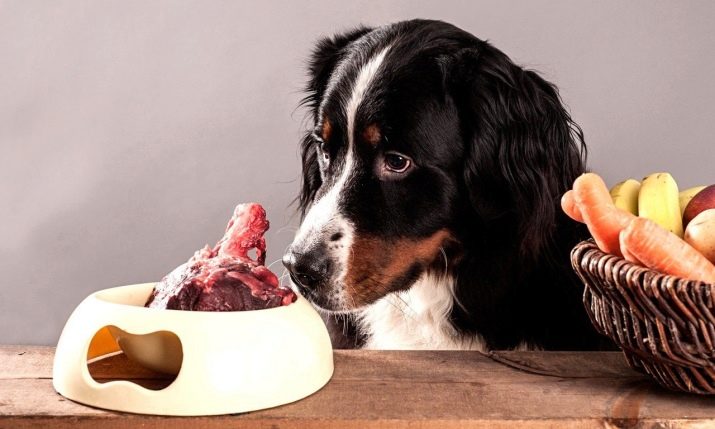
This is the minus of such nutrition - the owner must know what products are allowed on the dog "table", be able to combine them in the right ratio. In addition, such food will cost more than most feeds (with the exception of the feeds of holistic and some super-premium brands).
In addition, natural nutrition requires time and effort from the owner. It is necessary to take care in advance of the disinfection of meat (if it is given raw), the preparation of porridge, fish. Of course, for a loving owner, if he made a choice in favor of a natural woman, this would not be a big problem. Difficulties can arise if there is a need to leave and leave the animal in a zoo hotel or in the care of friends or relatives.Not every "successor" has the desire and ability to continue feeding according to the usual pattern.
It is important to understand that natural nutrition for dogs is a separate, special diet for your pet. The concepts “natural” and “food from the table” should not be confused, even if the owner eats a varied and high-quality food.
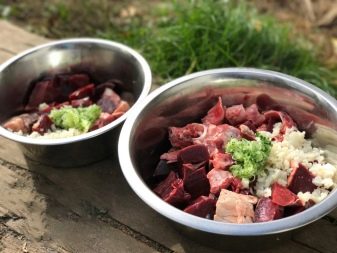

What can I feed?
To answer this question, experts and experienced breeders recommend turning to the BARF system developed in 1993. It is based on the idea that a dog needs to be fed meat products, and its diet should be as close as possible to the diet of a predator in the wild. To be more precise, this is meat and poultry, moreover, along with cartilage, veins, eggs, greens, roots.
In the diet according to BARF, several products occupy a leading position.
- Raw meat with streaks, cartilage (beef, lamb, horse meat, chicken, turkey meat, rabbit meat).
- Bones - they are given raw. Moreover, the meat and bones in the diet of a caudate friend should be approximately the same amount. It is also the neck and head of birds, it is important to always remove the beak, cow's tails, mosles.
- Fish - source of phosphorus and omega-3. Fish, unlike meat, should only be cooked, hake and pollock are preferred.
- Offal - bird offal, heart, lung, trachea, liver, beef trimmings.
- Vegetables - in this system, vegetables are also given raw. Carrots, zucchini, bell peppers, pumpkin, cucumbers, cauliflower are allowed, tomatoes, beans (leguminous, not beans), and white cabbage should be present in a smaller amount. As part of this nutrition system, it is proposed to puree vegetables, although it is permissible and simply finely chop them.
- Fruits and berries represented by apples, pears, blueberries, lingonberries, blueberries. Most fruits, even those listed, contain a lot of fructose (sugar), which is detrimental to the dog’s health. Apples should be green, with acidity, similarly pears.
- Fresh greens It is also a source of vitamins, micro and macro elements, improves digestion, and helps to remove wool lumps from the intestines. These are young dandelion leaves, nettle leaves (first, pour over them with boiling water, then cool), parsley, salad, and also sea kale.
- Eggs - there are several limitations, since this product is given raw, with only yolk, so 1-2 times a week is enough.
- Dairy products allowed in the dog’s power system. They can be represented by kefir, natural (unsweetened) yogurt, yogurt.
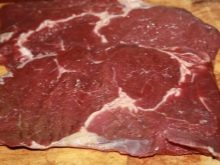
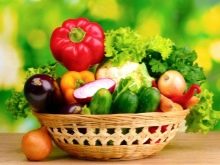
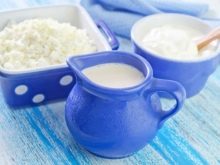
Carbohydrates can come with cereals, especially since they provide satiety to the animal. However, you should not give empty porridge - you will get a “skew” in the direction of carbohydrates and a “lack of protein”. In addition, the digestive system of the dog is not intended for cereals, yet they are predators.
The main cereals allowed in the dogs menu are rice and buckwheat. They can be given daily: alternate or mix. The palm belongs to buckwheat, and rice can be recommended for dogs with inflammatory bowel processes, after poisoning. Rice is a natural absorbent, but there is a lot of starch in rice porridge; therefore, for dogs with excess weight or diabetes, this cereal should be "cut" in the diet.
Once a week, provided that the dog has no allergies, it is allowed to feed the dog with Hercules (long cooking), barley and millet porridge. Porridge should not be sticky, in such a consistency it is digested worse. Recipes can be found in cookbooks for each type of porridge. In general, this is 1 part of cereal in 1.5-2 parts of water.
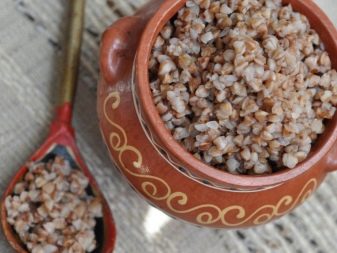
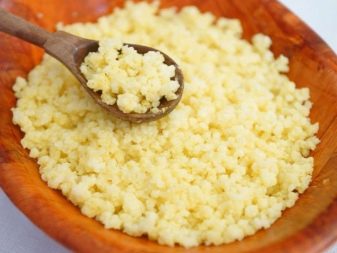
Do not cook psugana, corn, pearl barley porridge, as well as legumes. They do not carry nutritional value to the body, moreover, they are not absorbed by the animal’s body and can provoke digestive upset. Corn and pearl barley, in addition, often provoke the appearance of dermatitis and other skin reactions. A semolina even cause inversion of the intestines.
As already mentioned, you can’t give your pet “naked” cereals, always with meat or vegetables.
In addition to food, you should take care of food additives for your pet, in particular - healthy fatty acids. They can be obtained from special fish oil for dogs, burdock, olive or linseed oil. It is recommended to take care of vitamins B, C and E, and bran is usually given to improve intestinal motility.
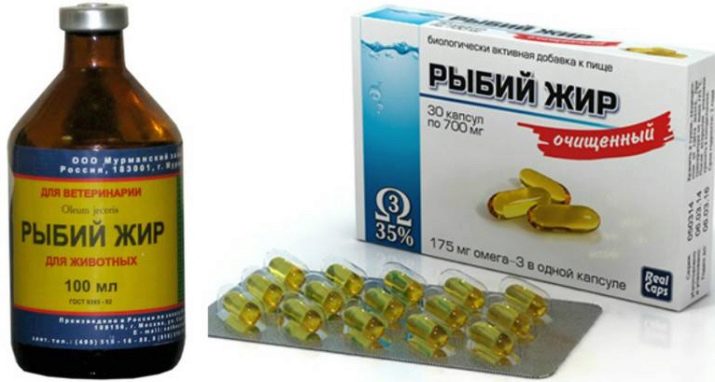
What should not be given?
There is an opinion that dogs can be fed compound feed. This is a big mistake. Compound feed is suitable for birds and herbivores, but dogs are predators, they have a different structure of the digestive system.
Do not give pets bread and baguette, buns, rolls:
- there is a risk that the crumb will close the throat and the pet will begin to choke;
- the same soft lump will be digested for a long time, which means that the risk of fermentation in the intestine increases;
- finally, the dog does not bring anything useful bread treats.
But a few crackers a day (without salt and spices) will benefit the dog - they will fulfill the role of a toothbrush and a bone for teeth, and improve intestinal motility.
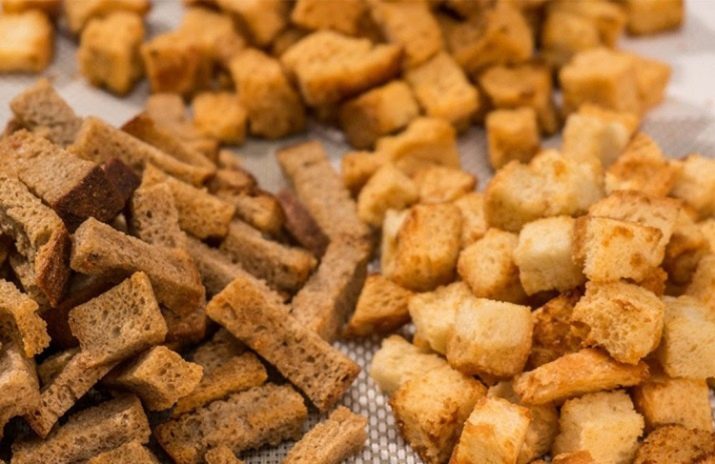
Potato in the dog’s diet also causes great controversy. It is immediately worth noting that if the root crop is the only vegetable and, moreover, the basis of the diet, the latter cannot be called useful.
But as an additive, baked or boiled potatoes will not harm the pet. In a week of an adult, 1-2 tubers are enough, for puppies this dose is reduced to 1/2-1 potatoes. Many dogs love raw root crops, so you can occasionally spoil them with a couple of slices of uncooked potatoes (you must peel and rinse).
The most useful is the young potato, since in the tubers during storage accumulates a dangerous substance - solanine. It forms under the skin and can cause poisoning. Starting from the end of winter, it is better to refuse potatoes in the dog's diet, or at least peel the root crop before cooking or baking.

As for pasta, they (like potatoes) do not carry much nutritional value for the dog's body. However, for a change, this product can be included in the pet’s menu, especially since a high-quality product gives a feeling of satiety for a long time, while 1-2 times a week will be enough. An important rule - pasta should be hard varieties, they should be offered to a pet only in boiled form.
A little higher we have already said that bones are good for the dog and are even recommended by the BARF system. However, this applies to chicken heads (they are carefully plucked and the beak must be cut off), necks, wings. Do not give dogs chicken legs, because they are tubular, which means they can cause injury to the oral cavity, larynx, esophagus.
Mosals must be large so that the dog cannot bite them completely, breaking it into small pieces. They, as well as the neck and head, are given raw.
You can not give the dog raw river fish, since in most cases in this form it becomes a source of development of helminthiasis. However, even boiled river fish is not the best option because it contains a large number of small bones and does not provide an Omega-3 dog. Sea fish can and should be given to a dog, but it is also undesirable in its raw form.

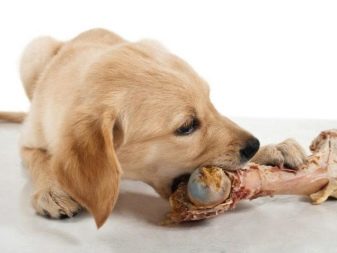
A strict ban should include:
- sweets, including cookies (with the exception of special dog biscuits) and sweet fruits;
- smoked, spicy and salty foods;
- onion and garlic;
- fried foods;
- from cereals - soybeans, semolina, barley, corn;
- grapes and raisins;
- raw egg white can provoke dermatitis and “unscheduled” molting (only yolk is given in raw form, and both protein and yolk in boiled form).

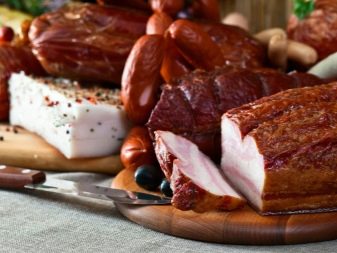
How to make the right menu?
When compiling the menu, it is important to consider not only the daily calorie content and the number of meals, but also the ratio of useful nutrients. The simplest formula for a proper home diet for a dog is as follows:
- meat - 60-70% of the diet;
- vegetables and herbs account for 15-20%;
- for dairy products - 15-20%.
As a rule, the daily norm for an adult dog is 2-4% of its weight, for a working individual another 5% of food is added to this amount, for growing puppies - 10%.
Already from a month old, a puppy can be accustomed to meat, giving 100-200 grams per day. For an adult, this figure can grow up to 0.5 kg per day. Bones with offal can also be attributed to the category of “meat”, but it is unacceptable to completely replace them with meat. Meat slices should not be lean; the best option is a small percentage of fat. Otherwise, fat can be added to food separately.
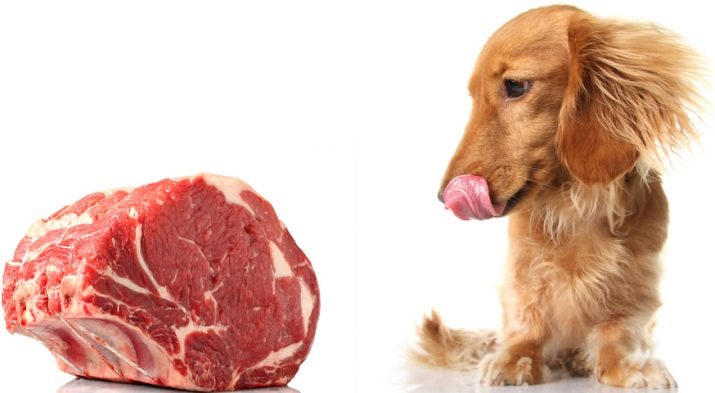
Some pets may be allergic to certain types of meat. The most common cases of intolerance are provoked by the chicken. Fatty mutton meat can be poorly tolerated by puppies and young dogs whose digestive system is not yet fully formed. But rabbit meat for puppies will be an excellent option, since it is considered hypoallergenic, but at the same time a very nutritious variety of meat.
The best option is to give the meat raw. You can avoid infection of the dog by pre-freezing the pieces for 12 hours, and before giving them to the dog, the meat is thawed at room temperature or scalded with boiling water. An important point - this type of disinfection is not suitable for pork and pork offal. The risk of preserving parasites even after scalding with boiling water is very high, so pork is given only in boiled form.
The minimum meat content in the dog’s diet is 35-50%, otherwise the dog will not receive vital proteins and amino acids. The body will not have resources for growth and development, and the dog will be weak, tired, non-energy.

From time to time, you need to pamper your fourth friend with cartilage, for example, a beef scar. It is useful for the formation of dog cartilage. Beef scar is a section of the stomach of the cow, covered with muscle fibers. In appearance (for a person) it looks very unappetizing, resembling a bag covered with a pile, the smell can also not be called pleasant. Before treating the pet, the scar must be thoroughly frozen. You can boil it (3-4 hours over low heat). It will be possible to reduce the unpleasant odor during cooking if you buy an already cleared scar.
Meat during feeding should be combined with vegetables and herbs. You can give vegetables a separate meal. Unrefined sunflower or olive oil should be added to the plant component. For puppies and dogs of small breeds - this is a few drops, for large individuals - up to a tablespoon per day.
It is unacceptable to offer fermented milk products to the pet at the same meal. The latter usually act as an independent snack, sometimes combined with cereals. Fat "sour milk" should not be high. Optimum - from 2 to 5%, but completely low-fat foods also will not work, they are poorly absorbed by the intestines. It is better to refuse from fermented baked milk, ayran, since they can cause fermentation in the intestines.

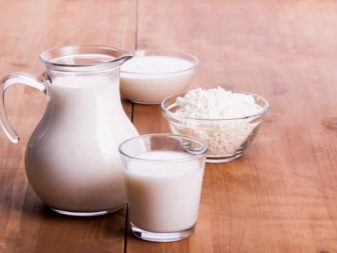
There is no need to mashed food (the exception is food for sick, very old dogs and puppies up to a month). The pieces should be quite large, which allows the dog to also train the jaw system during the meal, to brush away plaque from the teeth. Dogs do not chew food, but immediately swallow a piece or gnaw a piece of a suitable size from it. Chunks should be cut, given the size of the jaws of the animal.
Raw vegetables can be chopped or grated. Apples and carrots can be cut into cubes or straws, the dog will independently gnaw them. Bran is best added to fermented milk products.
When compiling the menu, it is important to remember not only about allowed and prohibited products and their ratio, but also some other principles:
- the components are prepared separately (disinfected or boiled, cut), and mixed only in a bowl;
- food for the dog does not require salt and spices;
- one of the most important principles is that it is impossible to combine ready-made food and natural nutrition, this is fraught with the development of diseases of the digestive tract, in addition, in this case it is difficult to control the amount of food eaten, the ratio of nutrients in the dog’s diet.
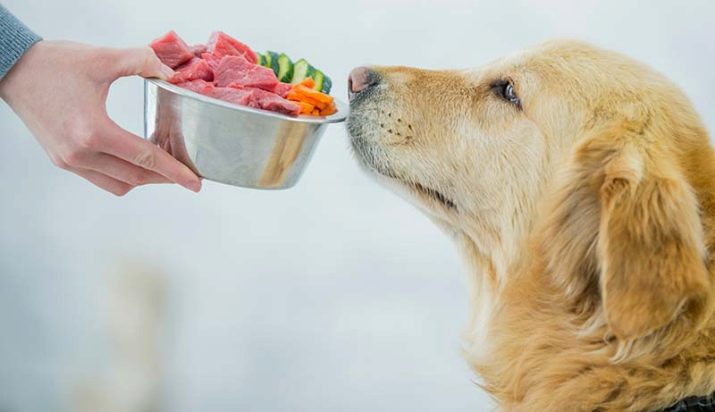
Do I need extra vitamins?
Naturally fed dogs must be given extra vitamins. Preference should be given to ready-made vitamin-mineral complexes, since their composition is as balanced as possible and is suitable for a particular dog.
Most essential for a dog are several separate vitamins.
- Vitamin C. Vitamin C is not produced by the animal’s body, so it must come from outside. Since food usually lacks ascorbic acid, it is necessary to give it separately.
- Vitamin E (tocopherol). It is an antioxidant, found in large quantities in vegetable oils. Since they do not form the basis of the dog’s diet, the body may be deficient in vitamin E.
- Vitamins of group B. They are contained in cereals, but if the dog eats according to the BARF system, there will be a clear lack of these vitamins in the diet. The solution is to buy a pharmacy version and add to food, following the instructions.
- In winter, dogs are also recommended vitamin D. But as soon as sunny days come, it is much more correct to walk with the pet in the sun, since vitamin D is actively produced at this time. When using the pharmacy analogue, the dosage should be carefully observed, since hypervitaminosis in the case of vitamin D occurs very quickly.
During the off-season, dry yeast (not baker's) can be added to the diet.
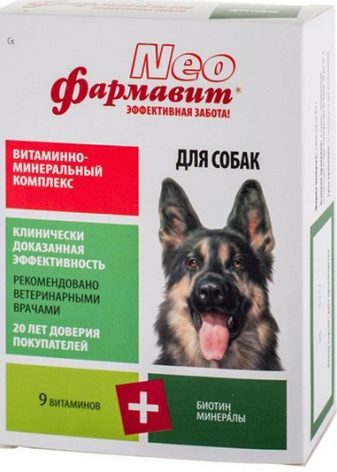

How much food to give per day?
To calculate the amount of food you can use the formula:
- daily dosage of food for puppies up to 6 months - 6-7% of its weight;
- the daily dosage of an adult (over 6 months) is 2-4% of its weight.
For example, for an adult dog older than 6 months weighing 15 kg, the calculation of the daily amount will be 600 grams (15 times 0.4). For a puppy of the same weight, but less than 6 months old, 1050 grams of food (15 times 0.7).
It is important to maintain the balance of the BJU when building a daily pet menu. Calculate the required amount of food will help the table:
Need | Daily requirement (g) per 1 kg of animal weight | The amount of the total daily diet, what products are represented |
Squirrels | 3-4 | 2/3 of the ration - meat, fish, offal, dairy products |
Carbohydrates | 10-15 | 1/3 - cereals and vegetables |
Fats | 1-2 | Present in protein products: meat with fat, bones, "sour milk", can be added in the form of vegetable or olive oil to cereals and vegetables. |
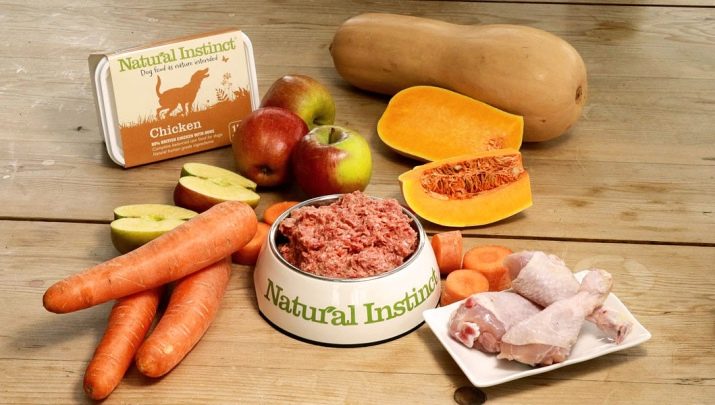
In this case, the lifestyle of the animal, its age, state of health and even the time of year should be taken into account. In summer heat, the dog can eat less. Young, active and working dogs eat more, pregnant and lactating females can also increase the daily dosage by 4-5%.
A serving should be eaten by the dog at a time. If there is food left in the bowl, most likely you are overfeeding the animal, this can lead to obesity over time. If the portion size has not changed, and the dog suddenly cannot “overpower” it, it is logical to suspect that the pet is unwell. In this case, you need to carefully observe his behavior.
If the dog is undernourished, then a bowl of leftovers should be removed after 20 minutes. They will have to be thrown away; the animal should not be given the remaining food during the second meal. Food for the animal should be at room temperature.
We must not forget about clean water - it should always be available, be next to a bowl for food. Twice a day, you need to change the water to the pet.
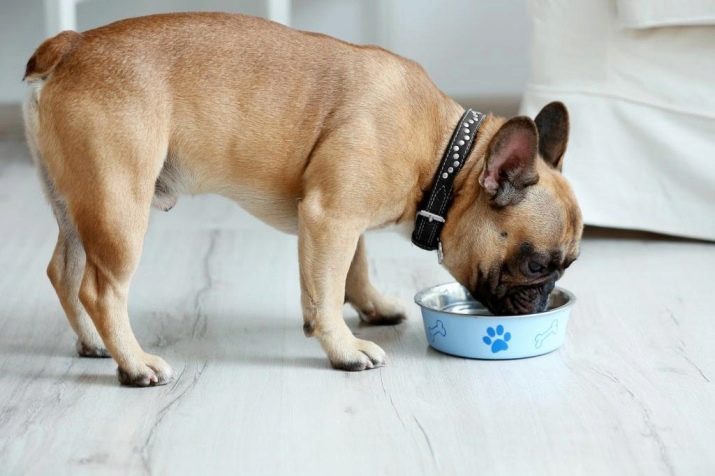
An adult dog after 8 months is usually fed twice a day - morning and evening. In the first half of the day you can give cereal with a sour-milk product, in the second half - meat with vegetables. Puppies up to 5 months old are fed 5-6 times a day, 3-4 times a day, enough for 6-7 months. After 8 months, they switch to 2-time.
It is important to feed the dog at the same time. This is useful for digestion, and for accustoming the animal to the regime. As a rule, after feeding, the dog is taken out for walks and natural needs. If you plan intensive training with your pet, then they are allowed only after an hour and a half after eating.
For tips on natural feeding for dogs, see the next video.








































